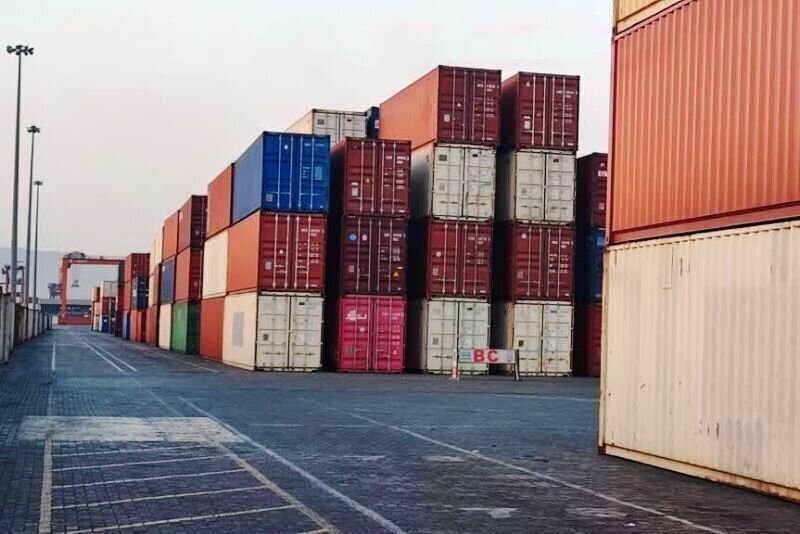INSUBCONTINENT EXCLUSIVE:
TEHRAN As revealed by a provincial authorities, the worth of non-oil export from Semnan province rose 60 percent during the very first 9
months of the present Iranian calendar year (March 20-December 21, 2024), as compared to the exact same period of time in the past
year.Morteza Hajian-Nejad, the director-general of Semnan provinces Customs Department, said that 310,000 tons of products worth over $370
million were exported from the province in the nine-month period, showing likewise 19 percent rise in regards to weight, year on year.He
said that the products were exported to 40 nations, and pointed out Iraq, Afghanistan, Turkey, and Russia as the main export destinations of
the products exported from the province in the said time span.The authorities further announced that 32,000 lots of products valued at $191
million were imported into the province in the first 9 months of today year, showing 7 percent growth in worth, and 20 percent increase in
weight, as compared to the exact same time period in the previous year.As previously revealed by the head of the Islamic Republic of Iran
Customs Administration (IRICA), Iran's non-oil exports rose 18 percent in the very first nine months of the Iranian calendar year to $43.14
billion.Foroud Asgari stated imports during the pointed out period, including gold bullion, totaled up to $50.89 billion
The weight of imports decreased by 3.16 percent to 27.94 million loads, he added.Non-oil export volume reached 116.35 million tons in the
nine-month duration, a 13.77 percent increase from the previous year, Asgari kept in mind
The average custom-mades worth per lots of exported goods increased 3.74 percent to $371
Petrochemical exports represented 50.7 million tons, valued at $19.7 billion, representing a 33.25 percent increase in volume and a 32
percent rise in value year-on-year
China remained Iran's top export location, purchasing $11 billion worth of goods
Iraq followed with $9.4 billion, the UAE with $5.3 billion, Turkey with $5.2 billion, Afghanistan and Pakistan with $1.7 billion each, and
Together, these seven nations represented 82.4 percent of the total export volume and 82.85 percent of export value.The UAE topped the list
of Iran's import partners, exporting $15.3 billion worth of goods to Iran
China followed with $13 billion, Turkey with $8.9 billion, Germany with $1.8 billion, India and Russia with $1.1 billion each, and Hong Kong
These 7 countries supplied 75 percent of the import volume and 83 percent of import worth throughout the period.The average custom-mades
worth per ton of imported goods rose 8.4 percent to $1,821
Natural gas in liquid type led the export list at $6 billion, followed by liquefied gas at $2.5 billion and methanol at $1.9 billion
Secret imports consisted of raw gold at $5.6 billion, livestock corn at $2.1 billion, and smart devices at $1.7 billion.Asgari, who also
works as deputy economy minister, emphasized the role of trade in reinforcing the nationwide economy in the middle of continuous worldwide
sanctions.The 11th session of the Supreme Council for the Development of Non-Oil Exports was held after a four-year hiatus, with the
participation of Iran's first vice president on January 1
In an unique interview with IRIB, Alireza Dehghan Dehnavi, head of Iran's Trade Promotion Organization (TPO), highlighted the significance
of this council, which had been non-active for almost four years.He noted that the council had actually played a key role in national
decision-making processes before falling into disuse.Dehnavi discussed that the revival of the council was prompted during this years
National Export Day occasion, where Masoud Pezeshkian advised its reactivation.With the efforts of the government and the assistance of the
first vice president and the minister of industry, mining, and trade, the groundwork for the councils return was laid, culminating in its
11th session.The session, chaired by First Vice President Mohammad Reza Aref, united all council members to talk about pressing trade issues
The meeting focused on three primary areas: The council evaluated the analytical performance of the nations non-oil exports
Dehnavi acknowledged that Iran's non-oil trade balance has been unfavorable over the last few years, with a $17 million deficit taped in
2015 in spite of a favorable total trade balance
The Vice President charged the TPOI with reversing this trend by improving non-oil exports.The council determined several barriers impeding
foreign trade, including excessive guidelines, insufficient infrastructure for exports (such as transport and customs facilities), and
difficulties in export-related policies.Dehnavi emphasized the requirement to line up monetary and trade policies, as the former has often
The council fixed to reform trade policies to address these issues.Several propositions were authorized, consisting of holding routine
council sessions and developing provincial export development task forces led by governors
These efforts intend to make export promo a nationwide campaign.The council also talked about a strategic roadmap totally free trade zones,
aiming to transform these locations into export hubs
The TPO is preparing this document with council support.Additionally, partnership with the economic sector was highlighted to recognize and
carry out high-impact export projects.Other topics included reforms in re-exports and short-term imports, with a job force comprising
custom-mades, agriculture, health, and trade companies formed to improve processes
The rates of export items at customs was also discussed, with calls for a review to enhance coordination amongst export-related bodies.The
session concluded with strategies to develop specialized commissions to preserve continuity in between council conferences and ensure
effective decision-making in foreign trade.MA

